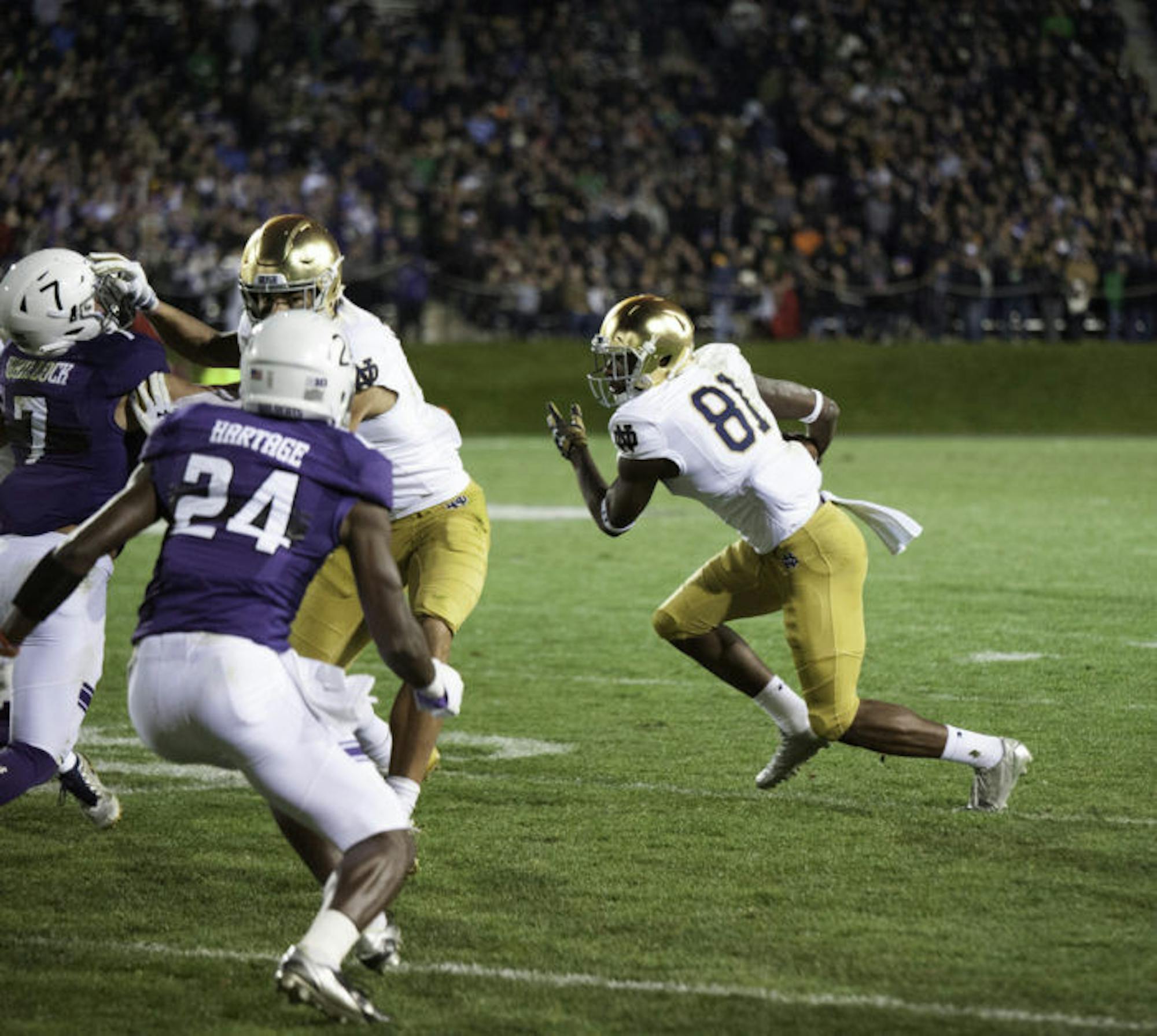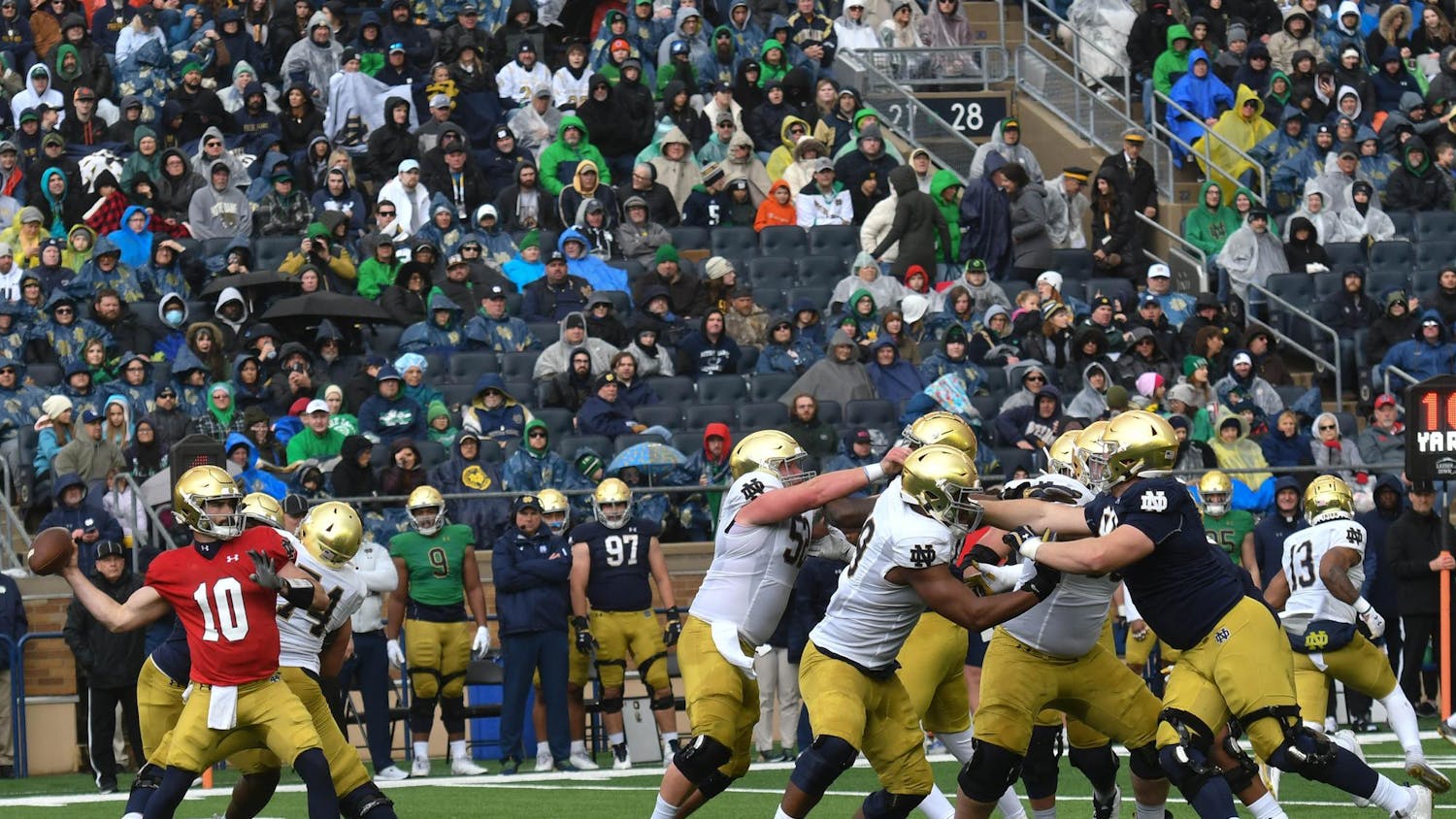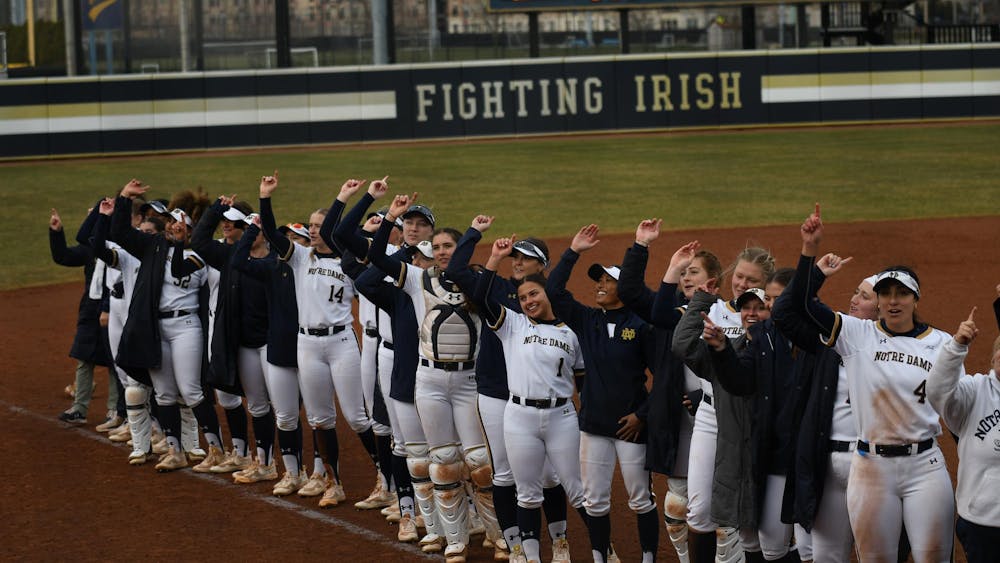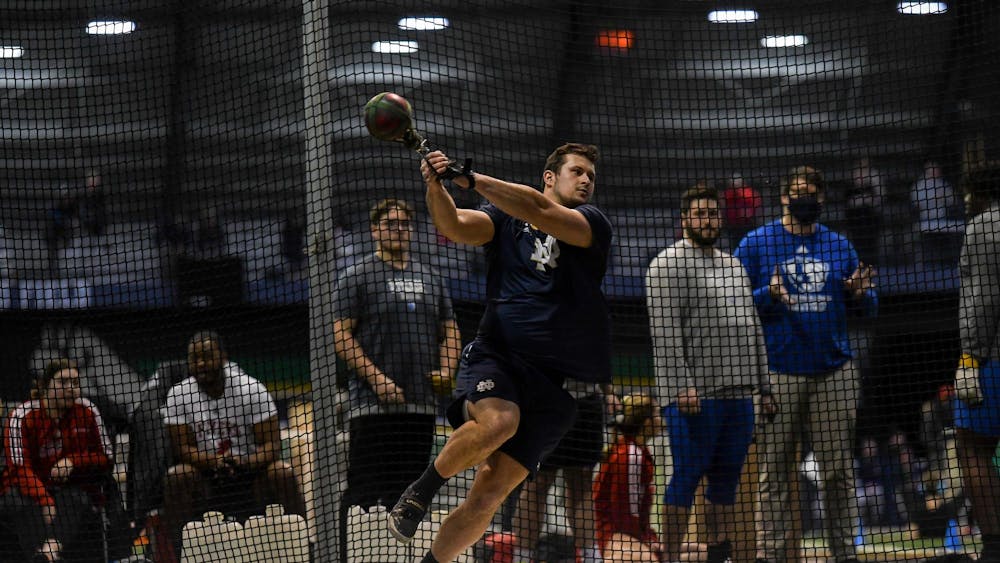At this point in the season it’s crystal clear that Notre Dame poses quite a few very real threats to any team in the nation: a highly skilled offensive line, a precise passing attack and a deep defensive line with a successful scheme behind them. But there is one threat the Irish pose on the passing front that simply can’t be taught: physicality.
Any defensive back field preparing to face Notre Dame will simply have to accept mismatches at the hands of a receiving corps of tight ends and wide outs that are not only long but strong. On paper, Notre Dame’s receiving weapons are scary for any defense.
Sophomore tight end Cole Kmet: 6’6, 258 lbs.
Graduate student tight end Nic Weishar: 6’5, 246 lbs.
Senior tight end Alize Mack: 6’5, 247 lbs.
Sophomore tight end Brock Wright: 6’5, 260 lbs.
Senior wide receiver Miles Boykin: 6’4, 228 lbs.
Junior wide receiver Chase Claypool: 6’4, 227 lbs.
And of course, there’s senior wide receiver Chris Finke who, coming in at only 5’10, 180 lbs., has shored up his blocking game to pose a significant and unexpected threat to any defense in the nation.
For cornerbacks, defensive ends, and defensive coordinators around the nation, there’s simply not much you can do to prepare for the size of the Irish. On October 8th, ahead of Notre Dame’s home matchup against Pittsburgh, Pitt head coach Pat Narduzzi said the following of Notre Dame’s passing unit:
“Their receivers are big. I can't tell the difference between their tight ends and the receivers. I think our guys are going to get confused. They put them all in 80 numbers and you can't tell. They're all big. They're all fast, and we'll have our hands full when we get out there…”
You don’t see many coaches readily admit that their players will be confused and mismatched prior to a matchup, but there’s just not much you can say about this Notre Dame receiving corps.
But of course, the size and stature of these men would mean nothing if they couldn’t put it to use, but the Irish have certainly used physicality to their advantage on the passing front this year, and it shows in the statistics and in the team’s own pride in and emphasis on their physicality.
Miles Boykin emphasized the importance of physicality for the receivers on the blocking side of the game, which has opened up new paths for production not only for the wide outs but also for receiving back like sophomore running back Jafar Armstrong, who has tallied 151 receiving yards on 12 receptions thus far.
“I think that [physicality] comes a lot in the blocking game,” Boykin said. “We’ve been doing a great job of blocking on the perimeter as receivers. One of our goals is to be the most physical receiving corps in the country, you know, and I think we’re stepping in the right direction everyday. You even see [Chris] Finke out there blocking his tail off, and it’s awesome to watch. Finke’s giving 50, 50 pounds up to guys sometimes, and he’s still making those blocks down field. You know, that gives us a lot of pride in this receiving corps and how tough we are and what we strive to be.”
“You’ve got to worry about two things with us. You know, we’re not just catching the ball, we’re also, we’re going to hit you. We’re going to block you up and down the field, and we’re going to do everything in our power to affect the game.”
And against Florida State this weekend, such physicality on the blocking side will be useful once again this season, because, although the Seminoles haven’t put up a great resume this season, a top tier program like that always has supreme athletes.
“They have tremendous athletes on their team, as they always do,” Chris Finke said. “So, they have a lot of skill when they’re playing the game. And we just know that we have to match that skill but also apply our traits that we work on everyday to overcome that.”
Finke went on to similarly emphasize the importance of physicality for the passing unit, and he expressed the importance he places on blocking in his own game despite his smaller stature in comparison to his teammates.
“I think [physicality] is really important, and it’s something we’ve been emphasizing in the receiver room, not only in yards after catch, but something I’ve always tried to improve on is my blocking. And I think last year, and even the coaches would say it, I might have been a little bit of a liability in the blocking game, but I think this year I’ve been holding my own pretty well. And I’ve been trying to put my physicality on defenders even though I’m undersized compared to them. And like you said, yards after catch too, not being afraid to lower the shoulder for you to pass the cornerback or safety,” Finke said.
“[Our physicality] just keeps the secondary on their toes a little bit if every time you’re running out there you’re going to hit them and all then all of the sudden you’re running a route and their bracing for the hit. Just kind of having that in the back of their mind that they know every time they’re coming across the line of scrimmage we’re trying to hit them.”
For the Irish, hard work and adjustments established in practice have been important for their development this season. They’ve gone from an offense with a number of doubts surrounding it, to one of the most feared passing units in the league. But amidst all of that hard work, Notre Dame ought to be thankful for the gift of physicality.













